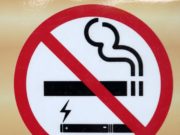A bit over a year ago, public health activists and vapers alike had breathed a sigh of relief, as the U.S. Food and Drug Administration (FDA), had announced a new comprehensive plan for tobacco and nicotine regulation.
Under this plan, the much disputed PreMarket Tobacco Applications (PMTAs), were delayed until 2022, and the agency had emphasized a change in stance towards harm reduction products, such as e-cigarettes.
Sadly a year later, the FDA has not yet approved a single reduced-harm nicotine product. An article on Competitive Enterprise Institute calls this a lapse that “does a huge disservice to millions of smokers who could benefit from switching from cigarettes to a far less harmful product.”
The FDA acknowledges that nicotine is not the main issue
The article pointed out that the market has already seen to providing safer alternatives in the form of e-cigarettes, smokeless tobacco, and heat-not-burn devices. “All that is needed to make these products available and viable as smoking cessation tools is for the FDA to establish a regulatory structure that makes it easier and cheaper for manufacturers to earn FDA approval to sell the products and advertise them as reduced risk (compared to smoking).”
Over the last two years, the agency has received 367 premarket tobacco applications, but none of the products have been approved. Similarly, the agency has also received 35 Modified Risk Tobacco Product applications (MRTP), which would allow the products in question be marketed as safer alternatives, however none of these have been approved either.
Reviewing reduced harm products should be a priority
To date, the FDA seems to have been consumed by battling vaping amongst teens. And while nobody wants non-smoking teenagers to initiate the use of nicotine, making NRTs available to smokers who could be losing their lives to their habits, should be an equal priority on the FDA’s agenda.
“If Scott Gottlieb truly wants to improve public health, he cannot afford to be as myopic as the activists who focus only on the children. He must do as he promised and balance enforcement aimed at stopping teen initiation of nicotine use against actions aimed at encouraging adult smokers to quit. Legalizing some of the many reduced-risk alternatives to cigarettes and giving smokers a choice would be a good place to start,” concluded the piece.













